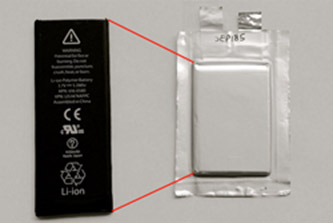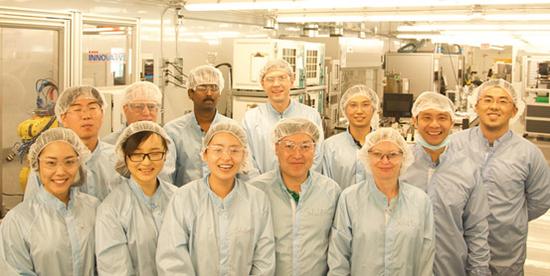The leaps in technology that have taken place over the past 20 years are staggering. The computer has been transformed from a utilitarian box into a clear rectangle of metal and glass, and small enough to fit in a pocket. Now that the equipment is much more powerful, the computing power of a new smart watch is stronger than that of the Apollo moon landing craft. However, the most popular rechargeable battery lithium-ion battery has also been stagnant but battery technology.

Solid Energy, founded by the MIT Entrepreneurial Team in the spring of 2012, announced in the end of October 2014 that its battery R&D has achieved a world-class breakthrough, with 2Ah battery samples reaching 1337Wh/L of energy. The density, which is more than twice that of Apple, Samsung, Xiaomi and Tesla batteries, will subvert the conventional lithium-ion battery that dominated consumer electronics and electric cars for more than 20 years. This achievement broke through the world’s highest record and was verified by A123, an independent battery testing laboratory in the United States.
According to the Ministry of Energy, the first generation of lithium batteries use stone negative electrodes, and the second generation of lithium batteries use silicon negative electrodes. Both the first and second generations belong to lithium ion batteries. The third generation lithium battery will be a "higher density" metal anode than "Lithium Ion." Although many third-generation lithium batteries, including lithium-sulfur and lithium-air batteries, are still far from industrialization, because they have a lot of fundamental problems in terms of positive electrodes, SE has demonstrated 1337Wh/ with lithium-cobalt-oxygen (LCO) positive electrodes that have been industrialized. L's 2Ah cell energy density. This is the highest cell energy density to date. SE is a battery material startup company that does not compete with traditional lithium-ion battery giants, but instead creates a new space for the third-generation "surpassing lithium-ion battery" battery material field.
Traditional lithium-ion batteries use graphite anodes that can only achieve energy densities of less than 600 Wh/L; advanced silicon anode batteries achieve energy densities of only 800 Wh/L, while ultra-thin lithium metal anode batteries can exceed energy densities of 1000 Wh/L. Although many lithium-metal negative batteries such as lithium-air and lithium-sulfur batteries are still far away from practical applications, Solid Energy Corporation of Massachusetts uses mature lithium cobalt oxide positive electrodes and successfully achieves energy density of 1337Wh/L on 2Ah batteries. , and will be applied to consumer electronics products on a large scale in 2016.
The same volume, twice the capacity, the same capacity, half the volume, the cost is only 80% of traditional lithium-ion batteries. The future mobile phone will be as thin as a credit card, which can be used twice as long for a single charge. Wearables, such as smart watch straps, are batteries. Electric vehicles have a 500-mile range of electric energy.

Solid State Energy Corporation of Massachusetts is committed to promoting the subversion of human electronics and electric vehicle batteries. The cycle of research and development of positive electrode materials is very fast and generally has a 5% increase every year, but this is very fragmentary because different applications and companies choose different anodes. On the negative side, innovation is relatively difficult, and it is generally a major breakthrough every 10 to 20 years. This is why the battery is determined by the negative electrode generation. It specializes in the development of next-generation anode materials that are compatible with different cathodes, including lithium iron phosphate, lithium cobalt oxide, and ternary materials. The future hopes to become a material company to sell its proprietary negative electrode and electrolyte to more battery companies with different positive electrodes. Currently, it has cooperated with several battery companies and consumer electronics companies to test battery materials.

At present, there are four types of battery materials in the battery industry: positive electrode, negative electrode, electrolyte, and separator. Most battery materials companies do cathode materials. Leading brands of battery materials include Mitsubishi Chemical, Japan Chemicals, Showa Denko, BASF, Celgar, Umicore and Shanshan Technology. The negative electrode is mainly stone-based, which is a very mature, low-cost commodity with low energy density. In the negative supplier, there is almost no technical difference, and they mainly compete by reducing costs. The cathode material is mainly a high energy density lithium cobalt oxide (LCO) used in traditional consumer electronic products.
However, the emerging directions are very diverse and fragmented, including lithium iron phosphate (LFP) and ternary materials including nickel-cobalt-aluminium (NCA), nickel-cobalt-manganese (NCM), and lithium manganate (LMO), for different applications. Field requirements such as high volume energy density, high quality energy density, high discharge rate, long cycle life, good safety performance, etc., and different companies in the same field will have different formulations and material choices. For example, the demand for cathode materials for a mobile phone and an electric car is very different. Electrolyte is also very diverse, dispersed, and different fields, different companies have their own recipes, but most of them are similar. On the diaphragm side, some core technologies are mastered by several Japanese and U.S. companies, which charge relatively high profits. Although they continue to dominate the high-end market, their advantages and monopoly status are gradually disappearing, because many new companies quickly master their advanced technology.
Solid Energy does not compete in crowded and fragmented positive pole space, but his materials (anode and electrolyte) are compatible with most cathode materials. SE eliminates diaphragms, so traditional diaphragm companies lose their advantage. SE mainly competes in electrolyte and negative electrode. SE's ultra-thin metal negative electrode enables the battery design to achieve an almost "no-negative" state, providing an unprecedented high energy density, which is the biggest difference and advantage of SE and other battery material companies. The negative electrode of SE must use SE electrolyte for stable use. The negative electrode and electrolyte of SE are a set.
The cycle of research and development of positive electrode materials is very fast and generally has a 5% increase every year, but this is very fragmentary because different applications and companies choose different anodes. On the negative side, innovation is relatively difficult, and it is generally a major breakthrough every 10 to 20 years. This is why the battery is determined by the negative electrode generation. SE focuses on the development of next-generation anode materials in combination with different cathodes, including lithium iron phosphate, lithium cobalt oxide, and ternary materials.

Massachusetts Solid State Energy Corporation has exclusive rights to use MIT’s related patents globally and has won a number of well-known technology awards including: US R&D 100 Award (Oscar for Scientific and Technological Innovation), US Department of Energy Clean Energy Award, Massachusetts Clean Energy Council Award, MIT Clean Energy Award.
Founded by the MIT Entrepreneurial Team in the spring of 2012, the company’s core technology is led by Dr. Hu Qichao (one of 30 Forbes outstanding scientists under the age of 30 in 2012) and MIT Donald. Prof. Sedwig (one of the world's 100 most influential people in Time Magazine 2012) co-developed Solid Polymer Ionic Liquid (SPIL) lithium metal battery materials.
The key products are lead containing stabilizers, which is produced in our lead salt factory, we also can supply tributyl citrate, dicumyl peroxide, diethyl sebacate, triphenyl phosphate and so on.
1. Product name:Dicumyl peroxide (DCP)
2. Applications:DCP, as an excellent organic peroxide, is mainly used as the crosslinking agents of PE, EVA resins; the vulcanizing agent of EPDM, natural rubber, nitrile rubber; the initiating agent of polymerization reaction; the curing agent of unsaturated polyester; and the conditioning agent in polypropylene melt index, etc. It is widely used in wires and cable, EPS, shoemaking, fire retardant paint and other industries.
3. Packing, storage, and transportation
(1) The internal packing of this product is PE plastic bags, and the net weight of each bag is 5 kg. The external packing is corrugated paper, and the net weight of each carton is 20 kg.
(2) The storage temperature: below 30 ℃.
(3) In the transportation, the exposure to strong sunlight and rain should be avoided;
(4) Protect it from heat, strong acid, and reducing agents in storage and transportation.
Rubber Chemicals,Plastics Chemicals,Chemical Rubber Additives,Plastic Additive
Gemhold (SJZ) Trading Co., Ltd. , https://www.gemhold.cn